Mirella Sichirollo Patzer's Blog, page 34
October 31, 2012
Elizabeth Blackwell: First U.S. Female Physician and Education Reformist by Katheryn Rivas
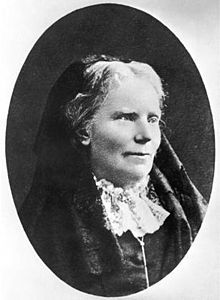
Elizabeth Blackwell: First U.S. Female Physician, Education Reformist
By
Katheryn Rivas
She might not be the very first American woman to practice medicine in the States—after all, mothers and daughters used holistic methods in earlier centuries to help cure the wounded and female abortionists and midwives were often considered modern-day "physicians"— but she was definitely the first woman to practice medicine with a medical license.
Women who can proudly call themselves doctors as well as those currently enrolled in U.S. medical schools sprinkled across the nation must give thanks to Elizabeth Blackwell, the first women to ever graduate from a medical school in the U.S.
She was rejected by six colleges because of her gender in 1847 before she was finally accepted to Geneva Medical College located in upstate New York.
Although Blackwell made an impact in America, she was actually born in Bristol, England in 1821. Her parents migrated to the states and moved the family to New York in 1832, and then to Cincinnati a few years later. There, Blackwell developed her yearning for financial and intellectual independence.
Initially she and her two sisters launched a school for women called, The Cincinnati English and French Academy for Young Ladies. It helped paid the bills, but due to a poor curriculum the school failed in 1842. Blackwell's interest in education reform did not end there however. She continued to tutor privately until she began to grow an interest in medicine.
Her interest in medicine really came about because friend. A terminally ill female friend of Blackwell stated that her ordeal would have been much more soothing and comfortable if she had been treated by a female doctor, especially because women are natural nurtures. Thus began Blackwell's professional pursuits to become a doctor. However the task was easier said than done.
Like stated before, she was rejected by every school until Geneva got a hold of her application—but even then her acceptance was granted due to a fluke. It's documented that the Dean of Admissions was so stumped of what to do about Blackwell's application that he sent her application to be reviewed by 150 male medical students. If one student objected, her application would be terminated. However, the students thought the application was a joke, and all unanimously voted for her Blackwell's admission.
Blackwell officially earned her medical degree in 1849.
Shortly after she decided to continue her education in Europe and worked under renowned physicians. She still had to overcome many obstacles due to her gender, but her hard work and persistence eventually paid off. Establishing herself in a male-dominated industry, Blackwell finally made the move back to New York in 1852 to set up her own practice.
After a successful career, she co-opened an all-women medical school in London in 1874.
Blackwell finally retired in 1877. She never married.

Kathryn Rivas is an education writer and blogger for onlineuniversities.com, a site that focuses on higher education. History is just one of the many topics Kathryn likes to cover. She welcomes your feedback.
WE LOVE COMMENTS

From History and Women









Published on October 31, 2012 09:11
October 27, 2012
NEW - History and Women Book Club
A NEW BOOK CLUB FOR WOMEN'S BIOGRAPHICAL FICTION
If you are as passionate as I am about reading novels about fascinating women in history, then I invite you to join a new online Yahoo Group Book Club. One book per month will be read and discussed based on nominations by the group's members.
The group is now accepting members and you can join by clicking this link. History and Women Book Club.
I hope to see many of you there to share some fascinating books about incredible women of past eras!
WE LOVE COMMENTS

From History and Women










If you are as passionate as I am about reading novels about fascinating women in history, then I invite you to join a new online Yahoo Group Book Club. One book per month will be read and discussed based on nominations by the group's members.
The group is now accepting members and you can join by clicking this link. History and Women Book Club.
I hope to see many of you there to share some fascinating books about incredible women of past eras!
WE LOVE COMMENTS

From History and Women









Published on October 27, 2012 21:48
Birthday of the Lady Who Would Begin the Tudor Dynasty....
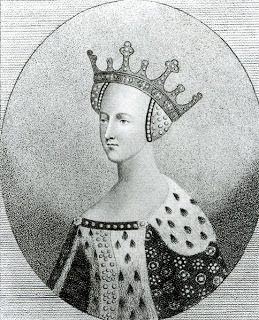
Catherine de Valois
Daughter of King Charles VI of France and Isabella of
Bavaria, Catherine was born in a palace in Paris on Oct. 27, 1401. At the age
of nineteen, Catherine was sent to England to marry the future King Henry V
(many years her senior).
The beautiful Catherine would become Queen of England
the year right after (1421). Life was happening
in a flash. Within that same year she
would give birth to a son, Henry. A
great celebration for the new heir…sadly, the year would end in mourning with
the death of King Charles, her husband.
Catherine was left a widow by the age of twenty-two. And despite all the ‘guarding of the Queen’,
it would be her keeper of her wardrobe that lit up her heart to love once again…Enter
Owen Tudor.
Their relationship lasted until the Queen’s death. Together they had at least five children and
all (lucky for them!) acknowledged by their half brother, King Henry VI. But, alas, one more birth would take the best of poor
Catherine in terms of her health. At the
young age of thirty-six, Catherine died shortly after that childbirth.
Unfortunately, history doesn't have much on what her personality may
have been like, so the best we can assume is that she was at the very
least a good mother and wife. Owen outlived her almost twenty-five
years
until he was executed by the Yorkists.
The result of their relationship however, would create a huge impact on
history. It was their son Edmund and
wife Margaret Beaufort who would produce a new king for England; King Henry VII. And that’s how the Tudors were introduced into
history.
Interesting food for thought: Apparently there never was any
document proving the legal marriage of Catherine and Owen- and there still is that questionable
nature regarding its validity under an English Act. That in itself still has historians debating
and speculating about the whole legitimacy of the Tudor Dynasty.
One can only imagine how different things might have been…
I LOVE COMMENTS

From History and Women









Published on October 27, 2012 11:18
October 25, 2012
Birthday of Historical Lady: Empress Maria Feodorovna
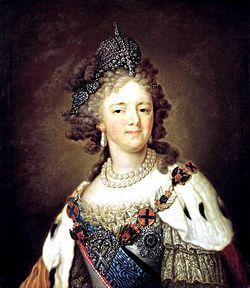
Born in Stettin, Prussia, Sophie Marie Dorothea
Auguste Louise (Oct. 25, 1759)- Duchess of Wurtemburg was a highly
educated and cultured young lady. By sixteen, she was fluent in German,
Italian, French and Latin. And at seventeen, was selected amongst many
of the available and worthy princesses to become the second wife of the
future Tsar Paul I (who had just become a widower).
The two future spouses met formally in Berlin for a
state dinner in Paul’s honor and, just like that- it was love at first
sight. Soon thereafter, Sophie converted to Russian Orthodoxy and was
given the name of and title of Grand Duchess of Russia, Maria Feodorovna
upon their marriage.
Catherine The Great (one can only imagine having
this lady as a mother-in-law) was initially thrilled with the charming
Maria, having so many similarities in terms of country of origin and
name. Maria had a very kind and delightful personality- she would be
one of the rare people that could actually put up with Paul; whose
character was quite difficult. This newly Grand Duchess had all the
patience in the world when it came to her husband. And, although their
union would produce ten children and for the longest time the couple
would remain deeply in love, times were often very trying, not only
politically, but also due to Paul’s roaming eye.
Maria would dedicate her life to charities and the
arts. Endowed with musical talent as well, Maria played the harpsichord
and entertained in her beautiful palace. Evenings were carefully
planned for the theatre, music and art. As much as she loved to read,
Maria was also a devoted writer. She kept a multitude of her diaries
that she wrote daily. These contained almost a minute by minute
recounting of her days. Later she would ask that all volumes be burnt
after her death.
Maria also had the great fortune of becoming
Empress alongside her husband when Catherine The Great passed away.
Finally she had the chance to pursue her interest in politics and
governing the people. Her advice and counsel were invaluable to her
husband. They were a very close couple despite his affairs and were
destined to be together forever- until his assassination.
Maria then became Dowager Empress and set the stage
for second in command after her son, Tsar Nicholas- a first in Russia
as second highest rank ( and so it would be that her daughter-in-law-
although Tsarina, would be a level under her).
As a widow, Maria took it upon herself to see to
her children’s highest level of education. As for herself, she
continued to be unparalleled in not only fashion, as patron of the arts,
management of charities, and had control over the bank as well. One of
her greatest contributions is most certainly the creation of the first
schools for girls in Russia. Talk about leaving a legacy!
Having exquisite taste in dress, décor –always a
very classy lady, this tallest of all Tsarina’s was a charming hostess,
shrewd negotiator, business woman, loving wife ,devoted mother and
dedicated ruler. A strong opponent of Napoleon in a time where
Revolution was the word, Maria Feodorovna held an undeniably strong
position in the history of Russia. A Prussian princess who became
Empress and Mother of a Tsar. Happy Birthday Maria Feodorovna!
I LOVE COMMENTS

From History and Women









Published on October 25, 2012 14:28
October 23, 2012
The Burning Candle by Lisa J. Yarde

Love is for women who have choices. She has none.
In eleventh-century France on the eve of the First Crusade, Isabel de Vermandois becomes the wife of a man old enough to be her father. He is Robert de Beaumont, Comte de Meulan. A hero of the Norman victory at Hastings and loyal counselor to successive English kings, Robert is not all Isabel had expected. Cruel and kind by contrast, he draws her into the decadent court of King Henry I. As Robert's secrets are unraveled, Isabel finds her heart divided. Her duties as a wife and mother compel her, but an undeniable attraction to the young William de Warenne, Earl of Surrey, tempts her. In a kingdom where love holds no sway over marital relations, Isabel must choose where her loyalties and her heart lie.
Based on the life of a remarkable medieval woman forgotten by time, The Burning Candle is a story of duty and honor, love and betrayal.
After Lisa J. Yarde's stunning success with her novels, Sultana and Sultana’s Legacy, comes a powerful story set in 11th century France. Isabel de Vermandois is a very young girl whose cruel, abusive, parents betroth her to the Comte de Meulan, a 50 year old man she has never met. She fights the union and is beaten and starved until she cooperates and the betrothal is formalized. Thereafter, she is sent to Paris to live with her uncle the King until the marriage can take place. It is there she encounters her future husband and another man, William de Warenne, the earl of Surrey.
When the Comte suffers a serious injury and it is possible he may die, she is rushed to his side where he seeks to marry Isabel right away. Despite her prior reluctance to wed him, he promises her love and security in exchange for bearing him sons and not to bed her until she menstruates. Believing him to be kind, she warms to him and they soon wed in a small ceremony, despite the fact they have not received papal dispensation.
When Isabel’s parents learn of the marriage, they withhold her dower lands and urge Isabel to remain a virgin until the papal blessing is received. Despite all this, she is drawn to her husband and soon finds herself in his bed. For a while, they are content, but their happiness erodes when she learns of her husband’s numerous illegitimate sons and his unusually close relationship with his clerk, Thorold, who is her nemesis.
While Robert is often absent from home for long periods, William de Warrenne reappears and she is obliged to nurse him to health. Although the relationship is tense, there is no mistaking the attraction William and Isabel feel for each other. Isabel’s life becomes more entrenched in turmoil - kidnapping, forbidden love, betrayal, long buried secrets, and the harsh realities of everyday life during the medieval period grace the pages of this story about a long-forgotten countess and woman of history.
Author Lisa Yarde has penned an authentic, compelling story without sugar-coating the realities and hardships women endured in medieval times. What I liked was that despite Isabel’s husband’s secrets and lies, which are revealed bit by bit, and all the hurt and humiliation she faced, she remained a dutiful wife, a woman to be admired and respected by readers.
It is evident that a great deal of time went into researching the countess’s life and that of those around her.
As the characters’ lives intertwine and their problems seem insurmountable, I found myself becoming engrossed in the many plot twists and unpredictability of the story. The prose is beautiful, flowing, easy to enjoy. Lisa J. Yarde knows how to extract time and place, people and situations with great skill. Part historical fiction, part biographical, this novel was a joy to read. The story is compelling and well crafted, written in an effortless, easy to enjoy manner. I was hard-pressed to put it down.
I LOVE COMMENTS

From History and Women









Published on October 23, 2012 14:00
Isabella D'Este, the Grand Lady of Renaissance
EBJ- Series: Legendary Women in History
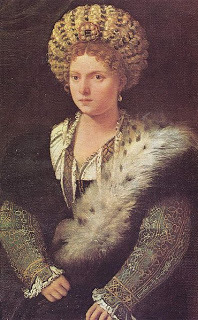
painting by Titian
Born in Ferrara (1474), and the eldest of six children, Isabella
was raised in a household where culture, politics and the arts were ever-present.
Her parents’ favourite, Isabella was
extremely intelligent and a delightful conversationalist.
She was such an avid learner of politics that by the age of
sixteen she was already debating with ambassadors and politicians. Sixteen was also the age she married her
betrothed, Francesco Gonzaga, Marquis of Mantua and General of the Venetian
army (she actually knew–and was promised to him since the age of six!). With a flair for fashion, an eye for great
art work, a passion for music and literature, a love of history and languages,
and a knack for politics- this blonde beauty also had charisma to boot.
Not only could Isabella influence fashion and set trends, renowned
artists such as Titian, Raphael, and the great Leonardo- all regularly spent
time earning her patronage. As for politics, Isabella’s keen sense of governing
and tactful understanding of her people earned her great respect as commander
and ruler as well.
In fact, Isabella always governed in place of her husband
while he was away- and while he was imprisoned in Venice under captivity of
King Charles VIII of France, she was regent for three years. She would later go on to rule as regent for
her own son (the heir) after the death of Francesco. And, ultimately, Isabella would become sole
ruler of Solarolo for ten years, up until her death in 1529.
As for the arts, Isabella had a passion for all that was
beauty and knowledge. Fluent in both
Greek and Latin, and a lover of Roman history, Isabella kept her mind filled
with culture. She also played several
musical instruments and delighted particularly in playing the lute. Surrounding herself with great artists, her
affinity and exquisite taste led her to the opening of her own ducal salons as
private museums containing her private art collection. Isabella furthered her mission by expanding
and making art and culture accessible by opening a school for girls. Having been taught no differently than her
own brothers, Isabella understood the importance and benefit that educating
girls can have on society. In her own
private time, Isabella also loved to write.
History has preserved a significant number of letters of correspondence
shared with her well-beloved sister-in-law, Elisabetta Gonzaga.
What about her love life? As mentioned previously, Isabella
and Francesco knew eachother from when they were little. Theirs began as a love that seemed to forever
flourish (they did go on to having eight children together!). But alas their story was not all
paradise-like. Francesco was to spoil
all that by begetting himself the mistress of mistresses…the ultimate Lucrezia
Borgia herself!
Lucrezia was married to Isabella’s younger brother- and no
sooner did she come into the family that the affair commenced. A rival to Isabella (but in no way culturally
comparable- or beloved by all), Lucrezia put a huge damper in what was once a
blissful marriage. But in the end Isabella
would be the one to come out triumphant, if one is to revisit the history: Lucrezia lived a horrid life and Francesco is
believed to have died of syphilis.
Isabella instead went down in history as a patron of
Renaissance, arts and literature. To
quote Niccolo da Correggio, Isabella rightfully earned the title of ‘First Lady of the World’.
Note: in the above painting, Titian painted Isabella as she looked in her 60's, but because she did not like herself as such, she demanded he repaint her as she looked when she was in her 20's! Spunky as well as smart;
I LOVE COMMENTS

From History and Women











painting by Titian
Born in Ferrara (1474), and the eldest of six children, Isabella
was raised in a household where culture, politics and the arts were ever-present.
Her parents’ favourite, Isabella was
extremely intelligent and a delightful conversationalist.
She was such an avid learner of politics that by the age of
sixteen she was already debating with ambassadors and politicians. Sixteen was also the age she married her
betrothed, Francesco Gonzaga, Marquis of Mantua and General of the Venetian
army (she actually knew–and was promised to him since the age of six!). With a flair for fashion, an eye for great
art work, a passion for music and literature, a love of history and languages,
and a knack for politics- this blonde beauty also had charisma to boot.
Not only could Isabella influence fashion and set trends, renowned
artists such as Titian, Raphael, and the great Leonardo- all regularly spent
time earning her patronage. As for politics, Isabella’s keen sense of governing
and tactful understanding of her people earned her great respect as commander
and ruler as well.
In fact, Isabella always governed in place of her husband
while he was away- and while he was imprisoned in Venice under captivity of
King Charles VIII of France, she was regent for three years. She would later go on to rule as regent for
her own son (the heir) after the death of Francesco. And, ultimately, Isabella would become sole
ruler of Solarolo for ten years, up until her death in 1529.
As for the arts, Isabella had a passion for all that was
beauty and knowledge. Fluent in both
Greek and Latin, and a lover of Roman history, Isabella kept her mind filled
with culture. She also played several
musical instruments and delighted particularly in playing the lute. Surrounding herself with great artists, her
affinity and exquisite taste led her to the opening of her own ducal salons as
private museums containing her private art collection. Isabella furthered her mission by expanding
and making art and culture accessible by opening a school for girls. Having been taught no differently than her
own brothers, Isabella understood the importance and benefit that educating
girls can have on society. In her own
private time, Isabella also loved to write.
History has preserved a significant number of letters of correspondence
shared with her well-beloved sister-in-law, Elisabetta Gonzaga.
What about her love life? As mentioned previously, Isabella
and Francesco knew eachother from when they were little. Theirs began as a love that seemed to forever
flourish (they did go on to having eight children together!). But alas their story was not all
paradise-like. Francesco was to spoil
all that by begetting himself the mistress of mistresses…the ultimate Lucrezia
Borgia herself!
Lucrezia was married to Isabella’s younger brother- and no
sooner did she come into the family that the affair commenced. A rival to Isabella (but in no way culturally
comparable- or beloved by all), Lucrezia put a huge damper in what was once a
blissful marriage. But in the end Isabella
would be the one to come out triumphant, if one is to revisit the history: Lucrezia lived a horrid life and Francesco is
believed to have died of syphilis.
Isabella instead went down in history as a patron of
Renaissance, arts and literature. To
quote Niccolo da Correggio, Isabella rightfully earned the title of ‘First Lady of the World’.
Note: in the above painting, Titian painted Isabella as she looked in her 60's, but because she did not like herself as such, she demanded he repaint her as she looked when she was in her 20's! Spunky as well as smart;
I LOVE COMMENTS

From History and Women









Published on October 23, 2012 12:55
October 12, 2012
The Sweet Girl by Annabel Lyon
Published on October 12, 2012 13:52
Why I Love Florence Nightingale (Now That I've Found Her) by Enid Shomer
I'd like to extend a warm welcome to author, Enid Shomer who so graciously offered to write a small post about the fascinating Florence Nightingale. As you may recall, I recently reviewed Enid's latest novel, The Twelve Rooms of the Nile.
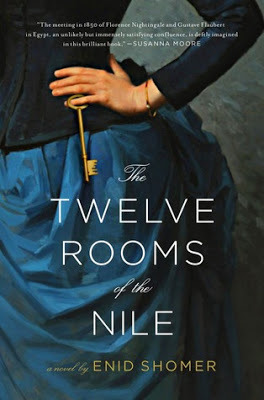
Here is a bit more fascinating insight into this most fascinating woman written by award winning author, Enid Shomer, and based upon the intense research she completed on Florence Nightingale's life.

Florence Nightingale
Why I Love
Florence Nightingale
(Now that I’ve Found Her)
by
Enid Shomer
The Florence Nightingale in my novel The Twelve Rooms of the Nile is a sassy,
ebullient, and witty woman. But it took
years of research to find this Nightingale, to liberate her from more than a
century of wildly varied biography and opinion.
Along the way I encountered distortion, myth, and lacunae on a grand
scale.
Initially,
my ideas about Nightingale were based on popular culture and a single famous
biography. From the former came the familiar if gauzy figure of the Lady with
the Lamp—heroine of the Crimean War, and inventor of nursing. Then in college I
read Lytton Strachey’s landmark volume Eminent
Victorians.
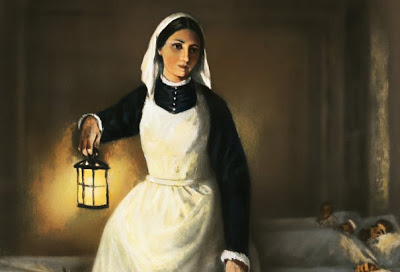
A member of the Bloomsbury group,
Strachey was a stylish writer with a razor-sharp tongue who introduced a new
kind of biography that combined psychological insight with sarcastic
irreverence. His portrait of
Nightingale, still taught as a modern classic, is more character assassination
than biography. He portrays a ruthlessly ambitious harridan who managed to work
at least one friend to death. In my opinion, Strachey did more to distort her
reputation than anyone before or since.
In the following decades, Nightingale was subjected
to a spate of scholarly critiques based on doctrinaire Freudianism, books such
as George Pickering’s Creative Malady: Illness in the Lives and Minds of
Charles Darwin, Florence Nightingale, Mary Baker Eddy, Sigmund Freud, Marcel
Proust, and Elizabeth Barrett Browning. Using
the fact that Nightingale was bedridden for eleven years after returning from
the Crimea and was never truly healthy again, these studies painted her as a
hysterical hypochondriac, a conniving neurotic who used her psychosomatic
illness for personal gain.
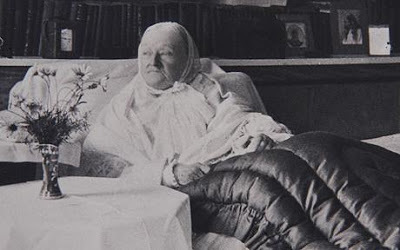
Florence Nightingale bedridden
Today, most scholars agree that the
cause of her poor health was brucellosis, which she contracted in the Crimea by
drinking raw milk or eating goat or lamb, common fare in Turkey then and
now. A disease of livestock transmissible
to humans, brucellosis causes symptoms similar to rheumatoid arthritis plus
fevers and debilitating bone pain. Far
from being a nutcase, Nightingale accomplished her legendary deeds not because
of her illnesses, but in spite of
them.
I also encountered a strange
myth. Many nurses I consulted thought
that Nightingale died of syphilis. Nightingale lived to be ninety. I believe she was a virgin. She never wavered in her opposition to
marriage because she knew it would mean the end of her independence and of her
ability to answer God’s call to be of service to the world. The sort of paradox that appeals to the
imagination, this myth is credible in part because it is true to
nineteenth-century mortality rates. Syphilis claimed as many lives then as tuberculosis. It caused the death, in fact, of the other
main character in my novel, Gustave Flaubert, who caught it from the
prostitutes he patronized along the Nile. Another source of the myth may be Nightingale’s repeated insistence in
diaries and letters on her own “very passionate nature,” a claim borne out by
her life. She could be reckless and impulsive, and never did anything
halfway. Alone, she crawled on her belly
by candlelight through the tunnels of the Great Pyramid. Unlike other women travelers
on the Nile, she stayed on board her houseboat to go up (and down) the
dangerous rapids at Aswan.
One essential trait almost never given
its due in all the literature is her crackerjack humor, which allowed her to
clothe her candor in the elegant robes of witty repartée. A letter she wrote as
a six-year-old to her Aunt Anne illustrates how outspoken she was by
nature: “I hope you have got safe to
your journey’s end…And I do hope you saw the eclipse of the moon on the day you
went. Papa says that you were blind
boobies if you did not watch it for a whole hour, as we did.”
Some of her accomplishments have gone
largely unsung. Few know that she
pioneered the application of statistics to large populations and effectively
invented Public Health. Her laboratory
was the hospital at Scutari, the barracks of the British Army and, later, all
of India, whose health care system she administered from her living room
through powerful friends—Prime Ministers and cabinet secretaries. And although she did not subscribe to the
germ theory, she instituted practices that had the same effect as if she
had: scrupulous hygiene, fresh air, and
downstream sewage treatment facilities.
She cut the mortality rate of British soldiers in the Crimea by
two-thirds.
The Nightingale I discovered and revived was
not the dour and humorless figure so many of us associate with her name, but a
vivacious rebel every bit the intellectual equal of Gustave Flaubert with whom she shares her
fictional adventures in my novel. Both of them were geniuses who balked at the
world but left it richer than they found it.
You can learn more about Enid Shomer and her work at:
http://www.enidshomer.com/
I LOVE COMMENTS

From History and Women











Here is a bit more fascinating insight into this most fascinating woman written by award winning author, Enid Shomer, and based upon the intense research she completed on Florence Nightingale's life.

Florence Nightingale
Why I Love
Florence Nightingale
(Now that I’ve Found Her)
by
Enid Shomer
The Florence Nightingale in my novel The Twelve Rooms of the Nile is a sassy,
ebullient, and witty woman. But it took
years of research to find this Nightingale, to liberate her from more than a
century of wildly varied biography and opinion.
Along the way I encountered distortion, myth, and lacunae on a grand
scale.
Initially,
my ideas about Nightingale were based on popular culture and a single famous
biography. From the former came the familiar if gauzy figure of the Lady with
the Lamp—heroine of the Crimean War, and inventor of nursing. Then in college I
read Lytton Strachey’s landmark volume Eminent
Victorians.

A member of the Bloomsbury group,
Strachey was a stylish writer with a razor-sharp tongue who introduced a new
kind of biography that combined psychological insight with sarcastic
irreverence. His portrait of
Nightingale, still taught as a modern classic, is more character assassination
than biography. He portrays a ruthlessly ambitious harridan who managed to work
at least one friend to death. In my opinion, Strachey did more to distort her
reputation than anyone before or since.
In the following decades, Nightingale was subjected
to a spate of scholarly critiques based on doctrinaire Freudianism, books such
as George Pickering’s Creative Malady: Illness in the Lives and Minds of
Charles Darwin, Florence Nightingale, Mary Baker Eddy, Sigmund Freud, Marcel
Proust, and Elizabeth Barrett Browning. Using
the fact that Nightingale was bedridden for eleven years after returning from
the Crimea and was never truly healthy again, these studies painted her as a
hysterical hypochondriac, a conniving neurotic who used her psychosomatic
illness for personal gain.

Florence Nightingale bedridden
Today, most scholars agree that the
cause of her poor health was brucellosis, which she contracted in the Crimea by
drinking raw milk or eating goat or lamb, common fare in Turkey then and
now. A disease of livestock transmissible
to humans, brucellosis causes symptoms similar to rheumatoid arthritis plus
fevers and debilitating bone pain. Far
from being a nutcase, Nightingale accomplished her legendary deeds not because
of her illnesses, but in spite of
them.
I also encountered a strange
myth. Many nurses I consulted thought
that Nightingale died of syphilis. Nightingale lived to be ninety. I believe she was a virgin. She never wavered in her opposition to
marriage because she knew it would mean the end of her independence and of her
ability to answer God’s call to be of service to the world. The sort of paradox that appeals to the
imagination, this myth is credible in part because it is true to
nineteenth-century mortality rates. Syphilis claimed as many lives then as tuberculosis. It caused the death, in fact, of the other
main character in my novel, Gustave Flaubert, who caught it from the
prostitutes he patronized along the Nile. Another source of the myth may be Nightingale’s repeated insistence in
diaries and letters on her own “very passionate nature,” a claim borne out by
her life. She could be reckless and impulsive, and never did anything
halfway. Alone, she crawled on her belly
by candlelight through the tunnels of the Great Pyramid. Unlike other women travelers
on the Nile, she stayed on board her houseboat to go up (and down) the
dangerous rapids at Aswan.
One essential trait almost never given
its due in all the literature is her crackerjack humor, which allowed her to
clothe her candor in the elegant robes of witty repartée. A letter she wrote as
a six-year-old to her Aunt Anne illustrates how outspoken she was by
nature: “I hope you have got safe to
your journey’s end…And I do hope you saw the eclipse of the moon on the day you
went. Papa says that you were blind
boobies if you did not watch it for a whole hour, as we did.”
Some of her accomplishments have gone
largely unsung. Few know that she
pioneered the application of statistics to large populations and effectively
invented Public Health. Her laboratory
was the hospital at Scutari, the barracks of the British Army and, later, all
of India, whose health care system she administered from her living room
through powerful friends—Prime Ministers and cabinet secretaries. And although she did not subscribe to the
germ theory, she instituted practices that had the same effect as if she
had: scrupulous hygiene, fresh air, and
downstream sewage treatment facilities.
She cut the mortality rate of British soldiers in the Crimea by
two-thirds.
The Nightingale I discovered and revived was
not the dour and humorless figure so many of us associate with her name, but a
vivacious rebel every bit the intellectual equal of Gustave Flaubert with whom she shares her
fictional adventures in my novel. Both of them were geniuses who balked at the
world but left it richer than they found it.
You can learn more about Enid Shomer and her work at:
http://www.enidshomer.com/
I LOVE COMMENTS

From History and Women









Published on October 12, 2012 13:04
October 4, 2012
Noah's Wife by T.K. Thorne
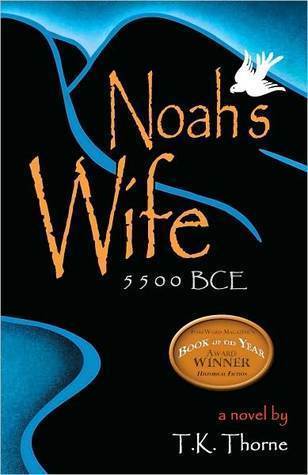
A ForeWord Reviews
Book of the Year!
Noah's wife is Na'amah, a brilliant young
girl who only wishes to be a shepherdess on her beloved hills in ancient
Turkey—a desire shattered by the hatred of her powerful brother, the love of
two men, and a looming disaster that threatens her world.
Noah built an ark—but this story has never been told!
“My name, Na’amah, means pleasant or beautiful. I am not always pleasant, but I
am beautiful. Perhaps that is why I am trundled atop this beast like a roll of
hides for market and surrounded by grim-faced men. If my captors had bothered
to ask me, I would have told them that their prize is of questionable value
because my mind is damaged. But they did not, and I lie draped, belly down,
across the back of an auroch, a large black ox with an eel stripe that runs
down his spine and a stench worse than a rutting goat. My mouth is parched and
swollen with dried blood, and every step the animal takes sends a jolt of pain
into my chest. Snatches of ground appear between the cloven hooves—a succession
of earth, grass, and rock obscured by the dark tangle of my hair—all I have to
measure the growing distance from the life I have known.”
Noah’s Wife by T. K. Thorne is a
fascinating novel about Na’amah, the woman who was married to Noah. From start
to finish, this was truly an engaging tale. Na’amah is an autistic savant, born with a
misshapen head during the birth process. Normally, the village would have cast
her out and left the infant to die, but her grandmother, Savta, managed to
convince the elders that her condition was only temporary. So she lived.
As Na’amah grows into womanhood,
Noah, a young man of about 25 years, asks for her hand in marriage. The
marriage is approved by her father, but her brother is against the union.
Rather, he wants her to marry an old friend. With her brother’s assistance, the
young man steals her maidenhood and they have Noah severely beaten. Na’amah
flees, and is captured into slavery just as she realizes she is pregnant as a
result of the rape. This sets of a journey for her to return to Noah, whom she
has come to trust and love.
The novel is set several years
before the flood and focuses on Na’amah and Noah’s early life. It is a story of
her abuse by villagers and her struggles to overcome not only the stigma of her
birth, but to integrate herself into a society that shuns her because of her handicap
or special abilities.
The author’s interpretation of
civilization in 5000 B.C. is completely absorbing. The beliefs, norms, and culture
of the times are interpreted in an manner engaging to the reader. The storyline
and easy prose also keeps one’s interest to the end. And what I liked about it,
was that it wasn’t presented in an overly religious manner. Rather, the story
stands for itself. This is a wonderfully creative, highly detailed tale of a
time long, long ago, and of a lesser known woman who forged her way through
life despite the tremendous odds against her. A lovely read!
I LOVE COMMENTS

From History and Women









Published on October 04, 2012 07:14
Book Givaway - The Whirling Girl
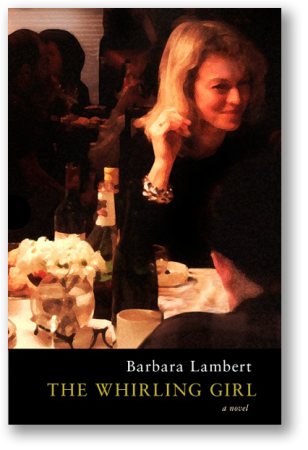
I'm so excited to announce a book giveaway for The Whirling Girl! This is open to Canadian residents only and it is for a trade paperback copy of the book.
All you have to do to win is leave a comment at the end of this post and tell me what you like best about anything Italian and why you want to read this book.
Don't forget to leave your email address so I can get back to you.
The contest will be open until October 13th at which time, we will announce the winner.
Good luck to everyone!









Published on October 04, 2012 06:26




